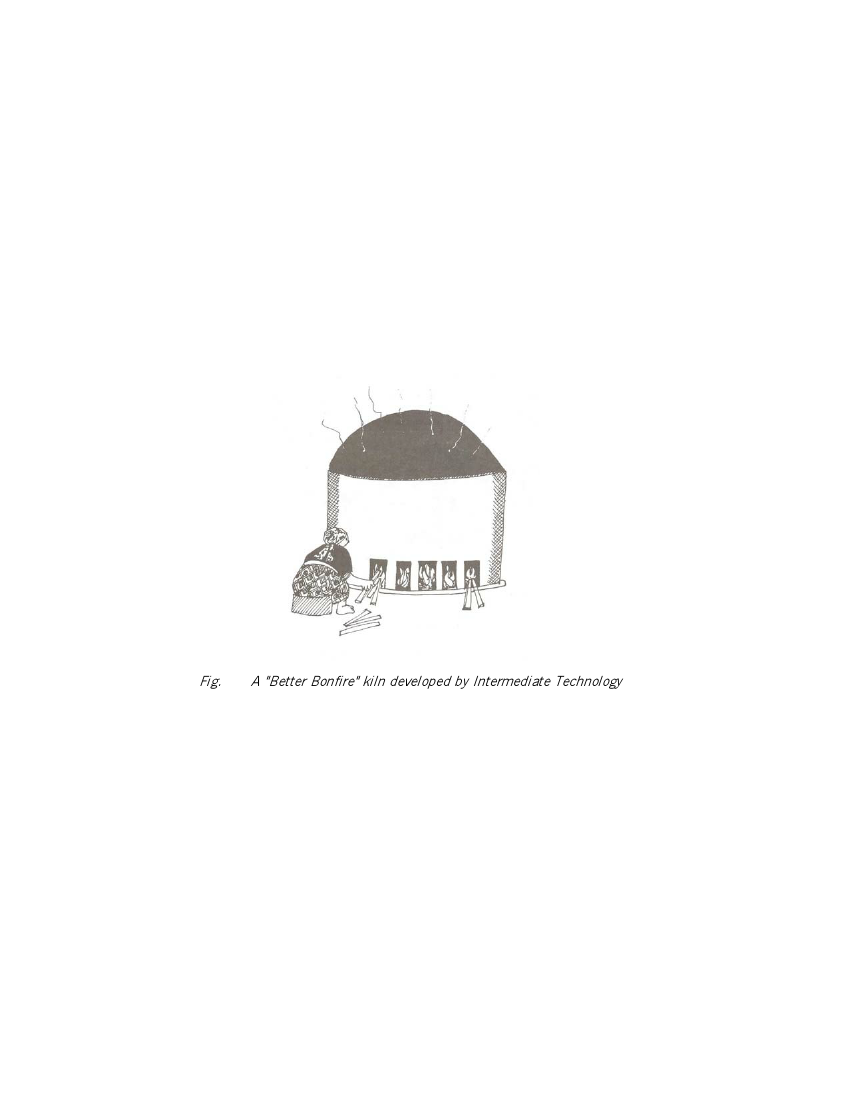
Fuel for firing
Given that improved cooking stoves aim, among other things, to reduce the amount of fuelwood required,
this fact should also be considered at the production phase. Most potters who produce traditional pots or
improved stoves use fuel wood and dried grass as the main fuels for firing. Some potters use other
agricultural waste such as stalks, leaves and even dung. There are alternative fuels, although most of these
require the use of a specialized kiln. Examples include coffee husks, rice husks, old engine oil, or even gas
or electricity. Start with the technology and fuel that you have experience in using. If this is the traditional
bonfire or pit, you can try enclosing the fire with a simple brick or mud wall.
You can reduce the fuel needed for firing by:
• keeping the heat in the "kiln" or bonfire by enclosing the fire
• improving the combustion of the fuel by ensuring that sufficient air reaches the fire
• firing a larger number of stoves together. This would mean having an appropriate sized kiln in
which you would fire a full load of stoves each time.
Fig. 5.2 A "Better Bonfire" kiln developed by Intermediate Technology
Once you have established that stove liner production is possible and that there is a market for the product,
it may be worth considering investing in a kiln or an improved bonfire. This can save fuel, improve the
quality of your liners and reduce the number of liners that crack during firing.